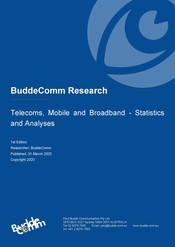Analysis of the Privatisation of Telstra - 1997-2002

Last updated: 7 Aug 2004 Update History
Report Status: Archived
Report Pages: 11
Analyst: Paul Budde
Synopsis
In November 1997, the government sold one-third of Telstra (Dilution of Public Ownership), worth $14 billion. In March 1998, the government indicated that if they won the next election they would sell the remaining two-thirds of Telstra, and in mid-1999 a second tranche, T2, was sold. In 2002, the controversial subject – with all its implications for rural services, competition, shareholder return, government debt, political ambitions, amongst others – was back on the agenda. However, at the end of that year the government took it off again, only to put it back on the agenda in mid 2003. This report looks back at the first and second partial sales of Telstra, and provides comprehensive analysis of T3.Related Reports
- Australia - Telecoms, Mobile and Broadband - Statistics and Analyses
- Australia - Data Centre Market
- South Pacific Islands - Telecoms, Mobile and Broadband - Statistics and Analyses
- Samoa - Telecoms, Mobile and Broadband - Statistics and Analyses
- Papua New Guinea - Telecoms, Mobile and Broadband - Statistics and Analyses
- New Zealand - Telecoms, Mobile and Broadband - Statistics and Analyses
- French Polynesia - Telecoms, Mobile and Broadband - Statistics and Analyses
- New Caledonia - Telecoms, Mobile and Broadband - Statistics and Analyses
- Vanuatu - Telecoms, Mobile and Broadband - Statistics and Analyses
Share this Report
TMT Intelligence
A platform to scale your intelligence tasks
Monitor critical insights with our AI-powered Market Intelligence Platform gathering and analyzing intelligence in real time. With AI trained to spot emerging trends and detect new strategic opportunities, our clients use TMT Intelligence to accelerate their growth.
If you want to know more about it, please see:
Research Methodology
BuddeComm's strategic business reports contain a combination of both primary and secondary research statistics, analyses written by our senior analysts supported by a network of experts, industry contacts and researchers from around the world as well as our own scenario forecasts.
For more details, please see:
More than 4,000 customers from 140 countries utilise BuddeComm Research
Are you interested in BuddeComm's Custom Research Service?
Hot Topics
News & Views
Have the latest telecommunications industry news delivered to your inbox by subscribing to BuddeComm's weekly newsletter.